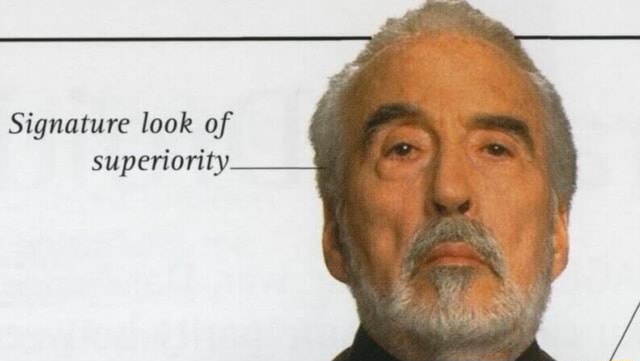TheFool
- 4 Posts
- 31 Comments

 283·3 months ago
283·3 months agoI really don’t get why I should use anything else than dd

 19·3 months ago
19·3 months agoHands down the best is FairEmail

 6·3 months ago
6·3 months agoPoland Leverages China’s Rail Link in Europe to Rein In Belarus
- Warsaw has struggled with migration crisis on Belarus border
- Poland uses key railway route into the EU to pressure China
By Natalia Ojewska, Aliaksandr Kudrytski, and Colum Murphy
July 24, 2024 at 5:02 AM UTC
Poland has threatened to choke off a key Chinese rail export route to the European Union in a diplomatic gambit to slow escalating the migration crisis on its eastern border.
President Andrzej Duda used his state visit in Beijing in late June to link the issue of migration and freight transit on the Belarusian border, according to people briefed on the talks. The number of irregular crossings from Belarus into Poland has dropped significantly since.
Alexander Lukashenko, the authoritarian leader of Belarus, has spent the last three years trying to stir up a migration emergency on his country’s 400 kilometer (250 mile) frontier with Poland. Tensions escalated in May when a Polish border guard was attacked and killed by a migrant, after which the government in Warsaw pledged to spend around $2.5 billion to fortify the area.
It also found a diplomatic pressure point. As Russia’s invasion of Ukraine shuttered trade routes, Belarus has emerged as the sole railway link for Chinese goods heading to the EU with the volume of containers increasing by 89% in the first quarter of 2024, according to the Eurasian Rail Alliance.
Limited Border Traffic May Hinder EU Imports From China
Poland keeps only three checkpoints with Belarus open
Lukashenko welcomed the jump in Chinese rail transit, eager to offset Belarus’ near-total dependence on Russia for cheap energy and loans.
On July 2, after Duda had returned from Beijing, Poland signaled that it would effectively shut rail transit through the Malaszewicze checkpoint on the Belarus border for 33 hours by slowing security and customs checks.
Poland’s leveraging of freight transit in discussions with China “could be a factor” in the lower numbers of border crossings since Duda’s visit, Foreign Minister Radoslaw Sikorski told Bloomberg. “We are still very angry about the killing of our soldier on the border,” he said.
Leveraging China
Attempts to breach Poland’s border have ebbed and flowed in recent years, but began to rise sharply in the weeks before European parliamentary elections in June. Polish Prime Minister Donald Tusk said the migrants were predominantly from Yemen, Somalia, Afghanistan, Syria and Iran and accused Belarus and Russia of weaponizing migration.
The Polish president’s trip to China caught Lukashenko’s attention. In a speech on July 2, the Belarusian leader said that Duda “asked Xi Jinping to influence Lukashenko and Putin so that they would end migration.”
The Chinese Foreign Ministry said in a reply to July 11 questions from Bloomberg News that Beijing “hopes that relevant parties can properly resolve differences through dialog” and “ensure the security and smoothness of international logistics channels.”
Irregular border crossings from Belarus have plummeted by 70% since early June, Interior Minister Tomasz Siemoniak told public broadcaster TVP Info on Tuesday. More than one hundred such cases were reported by the Polish border guards on June 27, the last day of Duda’s state visit.
Even if a tiny part of China’s exports to the EU go via Belarus, the shipping crisis on the Red Sea and its consequences for maritime trade mean that Eurasian rail links are enjoying a renaissance, said Konrad Poplawski from the Centre for Eastern Studies, a Warsaw-based think-tank.
Warsaw’s so-far successful leverage of a strategic vulnerability against China can serve as a lesson for policymakers. Beijing, which Poplawski said is the EU’s “trade partner but also a competitor and systemic rival,” can change tack if the bloc is “ready to bear economic costs” when its core interests are at stake.
— With assistance from Maxim Edwards and Slav Okov
 1·4 months ago
1·4 months agoThanks for all the good work!

 40·5 months ago
40·5 months agoI‘m gonna be that guy and recommend GrapheneOS it is a different Android system and while that sounds like a really hard task to do for a beginner they have a really user friendly web-installer with step by step instructions. Adterwards you can just install and use google play store from their integrated app.
It’s made specifically for Pixel phones and you can’t much more degoogle than that
Damn, congrats bro, your life is going to go up immensely soon
Yoda learns from Qui-Gon in the Clone Wars but how the others learn isn’t clear as far as I know
As @Karyoplasma@discuss.tchncs.de pointed out, this is an actual answer on Quora so at least it got that right

 41·6 months ago
41·6 months agoOne of the goals of the new GNOME project handbook is to provide effective guidelines for contributors. Most of the guidelines are based on recommendations that GNOME already had, which were then improved and updated. These improvements were based on input from others in the project, as well as by drawing on recommendations from elsewhere.
The best example of this effort was around issue management. Before the handbook, GNOME’s issue management guidelines were seriously out of date, and were incomplete in a number of areas. Now we have shiny new issue management guidelines which are full of good advice and wisdom!
The state of our issue trackers matters. An issue tracker with thousands of open issues is intimidating to a new contributor. Likewise, lots of issues without a clear status or resolution makes it difficult for potential contributors to know what to do. My hope is that, with effective issue management guidelines, GNOME can improve the overall state of its issue trackers.
So what magic sauce does the handbook recommend to turn an out of control and burdensome issue tracker into a source of calm and delight, I hear you ask? The formula is fairly simple:
- Review all incoming issues, and regularly conduct reviews of old issues, in order to weed out reports which are ambiguous, obsolete, duplicates, and so on
- Close issues which haven’t seen activity in over a year
- Apply the “needs design” and “needs info” labels as needed
- Close issues that have been labelled “need info” for 6 weeks
- Issues labelled “needs design” get closed after 1 year of inactivity, like any other
- Recruit contributors to help with issue management
To some readers this is probably controversial advice, and likely conflicts with their existing practice. However, there’s nothing new about these issue management procedures. The current incarnation has been in place since 2009, and some aspects of them are even older. Also, personally speaking, I’m of the view that effective issue management requires taking a strong line (being strong doesn’t mean being impolite, I should add – quite the opposite). From a project perspective, it is more important to keep the issue tracker focused than it is to maintain a database of every single tiny flaw in its software.
The guidelines definitely need some more work. There will undoubtedly be some cases where an issue needs to be kept open despite it being untouched for a year, for example, and we should figure out how to reflect that in the guidelines. I also feel that the existing guidelines could be simplified, to make them easier to read and consume.
I’d be really interested to hear what changes people think are necessary. It is important for the guidelines to be something that maintainers feel that they can realistically implement. The guidelines are not set in stone.
That said, it would also be awesome if more maintainers were to put the current issue management guidelines into practice in their modules. I do think that they represent a good way to get control of an issue tracker, and this could be a really powerful way for us to make GNOME more approachable to new contributors.

 3·6 months ago
3·6 months agoRemoved by mod

 1·6 months ago
1·6 months agoStand: 12.05.2024 09:06 Uhr
Rhein, Donau, Elbe: Die großen Flüsse in Deutschland werden regelmäßig überprüft. Über die kleinen Bäche allerdings gibt es bisher nur wenige Daten. Eine neue ARD-Mitmachaktion will das ändern.
Von Janina Schreiber, SWR
Der Mühlbach ist ein kleiner Fluss in Mecklenburg-Vorpommern und für ARD-Moderatorin Jessy Wellmer mit vielen Erinnerungen verbunden: “Das Plätschern dieses Baches ist der Soundtrack meiner Kindheit.” Ganze Sommer verbrachte die Journalistin dort, fing im Wasser des Mühlbachs gemeinsam mit anderen Kindern Flusskrebse. Doch wenn Wellmer jetzt den Bach besucht, sind die Flusskrebse nicht mehr zu finden: “Ich bin immer mal wieder da und stelle fest: Das Gesicht dieses Baches hat sich ziemlich verändert.”
Viele kleine Bäche in Deutschland - nahezu unerforscht
Die großen Fließgewässer in Deutschland müssen regelmäßig überprüft werden. Damit soll auch die europäische Wasserrahmenrichtlinie aus dem Jahr 2000 umgesetzt werden. Nach der müssen sich bis spätestens 2027 alle Oberflächengewässer in einem guten chemischen und ökologischen Zustand befinden. Doch von diesem Ziel sind die großen Flüsse noch weit entfernt: Laut Umweltbundesamt (UBA) sind 90 Prozent unserer Flüsse in keinem guten ökologischen Zustand.
Doch bei diesem Monitoring werden kleine Bäche mit einem Einzugsgebiet von weniger als zehn Quadratkilometer nicht erfasst. Dabei machen diese kleinen Bäche und Zuflüsse etwa 70 Prozent des gesamten Fließgewässernetzwerks in Deutschland aus - belastbare Daten über ihren Zustand gibt es allerdings nur wenige.
Citizen Science: Wissenschaft durch Freiwillige
Vor diesem Hintergrund hat das Helmholtz-Zentrum für Umweltforschung (UFZ) in Leipzig bereits vor drei Jahren das Citizen-Science-Projekt FLOW ins Leben gerufen. Zusammen mit mehr als 900 Bürgerinnen und Bürgern hat unter anderen auch Biologin Aletta Bonn vom UFZ Informationen gesammelt: Wie ist das Ufer des Flusses, nach was riecht das Wasser, welche Farbe hat es, wie klingt der Bach?
Citizen Science: das FLOW-Projekt
Citizen Science ist Wissenschaft durch Hilfe von Freiwilligen, auch Laien-Forschende. Durch die Teilnahme vieler Menschen sollen zum einen Daten erschlossen werden, deren Erhebung für forschende Institute sonst nur schwer möglich wäre. Zum anderen kann die Wissenschaft durch Freiwillige einen Beitrag zur Umweltbildung leisten. Kritische Stimmen hinterfragen die durch Laien gesammelten Ergebnisse, sie könnten ungenau sein. Im Rahmen des FLOW-Projekts (Fließgewässer erforschen, gemeinsam Wissen schaffen) vom Helmholtz-Zentrum für Umweltforschung (UFZ) und dem Deutschen Zentrum für integrative Biodiversitätsforschung (iDiv) haben Freiwillige nach Angaben der durchführenden Zentren gelernt, den ökologischen Zustand von Bächen zu bewerten und zu dokumentieren. Die gesammelten Daten sollen nach Angaben der Initiatoren die Gewässerforschung unterstützten und Basis sein für gezielte Schutz- und Renaturierungsmaßnahmen. Rund drei Jahre lang, bis Anfang 2024, hat das Bundesministerium für Bildung und Forschung (BMBF) das FLOW-Projekt gefördert.
ARD-Mitmachaktion soll Datenschatz erweitern
Diese “Wissenschaft durch Hilfe von Freiwilligen”, soll nun im Rahmen der ARD-Mitmachaktion #unsereFlüsse weitergeführt werden. Im Fokus steht dabei die Struktur des Baches. Denn daraus kann Biologin Bonn Rückschlüsse auf den ökologischen Zustand ziehen:
“Wenn der Bach schön geschwungen ist, bietet er viele verschiedene Lebensräume für Tiere und Pflanzen. Diese sind Nahrungsquelle für Fische und Vögel.” So funktioniere der Bach als gesundes Ökosystem im Gleichgewicht.
Mehr als die Hälfte der Flüsse in keinem guten Zustand
Tatsächlich ist die erste Bilanz der Daten aus dem FLOW-Projekt von mehr als 130 Bächen ernüchternd, so Biologin Aletta Bonn. Mehr als die Hälfte der beprobten Bäche, über 60 Prozent, seien stark beeinträchtigt durch Pflanzenschutzmittel. Das habe Auswirkungen auf Kleinstlebewesen wie Würmer, Schnecken oder Köcherfliegenlarven - es sind diese Arten, die bei zu hoher Pestizidkonzentration langsam verschwinden.
Dabei sind Köcherfliegenlarven ein wichtiger Anzeiger für die Gesundheit der Bäche. Gleichzeitig zeigen die Daten, dass die Ufermorphologie von mehr als 60 Prozent der Bäche in keinem guten ökologischen Zustand ist. Die Gewässer seien verbaut, es gebe keine Ufervegetation, die Ufer seien verarmt. Bewachsene Ufer stellen nicht nur die Filtration des Flusswassers sicher, sie sind gleichzeitig Lebensraum und Unterschlupf für verschiedene Arten wie Flohkrebse und Insekten.
ARD-Mitmachaktion als wichtiger Beitrag für die Umwelt
Forscherin Bonn sieht in Citizen Science für die kleinen Fließgewässer ein großes Potenzial: “Ich glaube, hier brauchen wir die Augen und Ohren von allen, aber auch das Können und Wissen und Engagement von allen.” Es sei ein wichtiger Beitrag für die Umwelt.
Auch Moderatorin Wellmer macht mit und will Fotos und Beobachtungen des Mühlbachs bei #unsereFlüsse einreichen: “Flüsse sind unsere Lebensadern. Also ab ins Grüne und den Bach checken.”










ytdlp.online